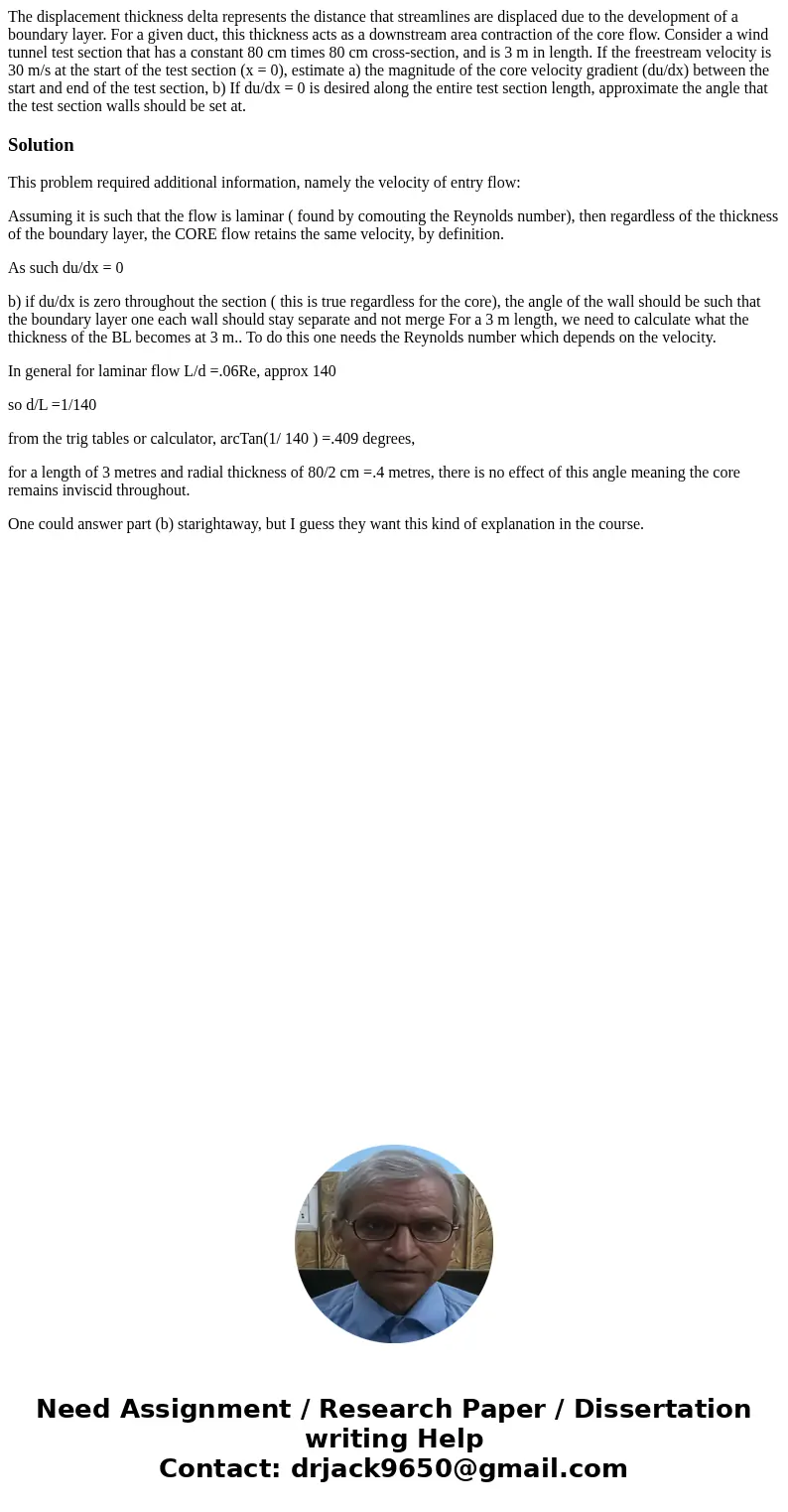The displacement thickness delta represents the distance tha
Solution
This problem required additional information, namely the velocity of entry flow:
Assuming it is such that the flow is laminar ( found by comouting the Reynolds number), then regardless of the thickness of the boundary layer, the CORE flow retains the same velocity, by definition.
As such du/dx = 0
b) if du/dx is zero throughout the section ( this is true regardless for the core), the angle of the wall should be such that the boundary layer one each wall should stay separate and not merge For a 3 m length, we need to calculate what the thickness of the BL becomes at 3 m.. To do this one needs the Reynolds number which depends on the velocity.
In general for laminar flow L/d =.06Re, approx 140
so d/L =1/140
from the trig tables or calculator, arcTan(1/ 140 ) =.409 degrees,
for a length of 3 metres and radial thickness of 80/2 cm =.4 metres, there is no effect of this angle meaning the core remains inviscid throughout.
One could answer part (b) starightaway, but I guess they want this kind of explanation in the course.

 Homework Sourse
Homework Sourse